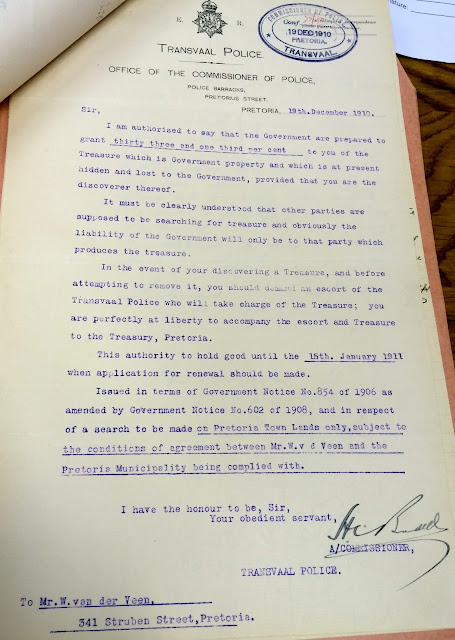 |
| Hidden treasure indeed, linking 'my' Arend to this van der Veen clan in Pretoria |
 The date is December 1910, post the Boer Wars in Pretoria and citizens apply for permits to search for treasure on Pretoria Town Lands.
The date is December 1910, post the Boer Wars in Pretoria and citizens apply for permits to search for treasure on Pretoria Town Lands.I loved retrieving this file from the National Archives in Pretoria, a slim folder, 115 years old, the cover has a James Bond feel to it - Secret Documents, signed by the Commissioner of the Transvaal Police in Pretoria.
The letter is an authorisation to one W. van der Veen granting him 33 and 1/3% of any treasure that he finds 'which is at present hidden and lost to the Government'. I can only assume that the treasure is military of nature.
This permit given is to Willem, the son of Arend Johannes van der Veen and he came out from Holland with his father, brother Hendrik Jan and sister Geertjen in 1858.
This document is a treasure to me for a very different reason, I may never be able to draw an accurate family tree but the document confirms the link between my van der Veen line and these Dutch settlers. The link comes from an unexpected place, an address on a Marriage Register from 1909, a year before the Hidden Treasure letters.
The address is 341 Struben Street, Pretoria. This is the same address given for Mr W. van der Veen on the letter from the Police Commissioner and for Sara Anna van der Veen at the time of her marriage to William Victor Sime.
Sara Anna is my mother's Great Aunt Annie.
 |
| Great Aunt Annie's Marriage Register from 1909. Note the address! |














